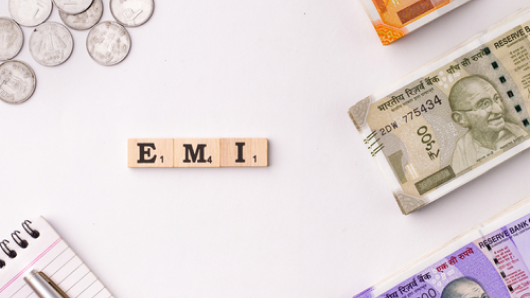Two Wheeler Loan EMI vs Lump Sum Payment: Which is Better?
December 17, 2024

When purchasing a two-wheeler, many people find themselves debating whether to opt for a Two-Wheeler Loan EMI or make a lump sum payment. This decision may impact your financial health in the long run. Understanding the differences between these payment options allows you to make an informed choice that suits your needs and circumstances.
In this blog post, we will delve into the topic of Two-Wheeler Loan EMIs versus lump sum payments. We will explore the advantages and disadvantages of each approach, provide relatable examples, and offer practical guidance on bike loan payment options and loan repayment strategies to help you decide which option aligns better with your financial goals.
Comparison of Two-Wheeler Loan EMI and Lump Sum Payment
| Parameters | Two-Wheeler Loan EMI | Two-Wheeler Lump Sum Payment |
|---|---|---|
| Ease of Financial Management | By spreading the cost over several months, EMIs make it easier to manage monthly cash flow without a large immediate financial burden, aiding in bike loan repayment options. | Paying the entire amount upfront can significantly impact your immediate cash flow and deplete available cash. |
| Immediate Cash Flow Impact | Regular EMI payments help in maintaining financial discipline and better budgeting for other expenses, contributing to effective loan repayment strategies. | Without the need for monthly payments, there is less financial planning involved after the initial purchase, reflecting on bike loan payment options. |
| Financial Discipline and Budgeting | Making timely EMI payments can improve your credit score, which is beneficial for future credit opportunities. | Since no loan is taken, your credit score remains unaffected by this purchase. |
| Credit Score Benefits | While convenient, taking a loan means paying interest, which increases the overall cost of the vehicle, impacting two- wheeler loan EMI. | Paying upfront avoids the cost of interest, which can lead to significant savings over time, influencing loan repayment strategies. |
| Cost Considerations | Ownership of the vehicle is fully transferred after all EMI payments are made. | You own the vehicle outright immediately, with no further financial obligations related to the purchase. |
| Ownership Implications | Smaller, regular payments cause less strain compared to a large lump sum, preserving savings for emergencies and supporting bike loan payment options. | Paying a large amount at once can deplete your savings or emergency funds, leaving you less prepared for unexpected expenses, highlighting considerations in bike loan payment options. |
| Emergency Fund Considerations | Opting for EMIs allows you to keep your funds free for other investments or unexpected expenses, demonstrating flexibility. | Using a large sum of money to buy a vehicle means those funds are not available for other potentially lucrative investments. |
Choose the Right Payment Strategy
Choosing between two-wheeler loan EMI and lump sum payments depends on various factors such as your financial situation, cash flow management, and investment opportunities. By carefully considering these factors and evaluating your needs and goals, you can make an informed decision on bike loan payment options. This decision involves EMI comparison and strategic loan repayment strategies that align with your financial objectives and immediate cash flow requirements.
Planning to buy your favourite two-wheeler? Apply for a Chakra Loan with Ujjivan SFB and enjoy competitive interest rates, up to 95% financing on the on-road price of the vehicle, hassle-free application process, and more.
FAQs
1. How can I calculate my Two-Wheeler Loan EMI?
You can use an online Two-Wheeler Loan EMI calculator provided by banks like Ujjivan SFB. Simply enter the loan amount, interest rate, and tenure to get an estimate of your monthly EMIs.
2. What happens if I miss an EMI payment?
Missing an EMI payment can negatively impact your credit score and may result in penalties or additional charges. It's crucial to make timely repayments to avoid any such consequences.
3.Can I change my EMI amount after availing of a Two-Wheeler Loan?
Generally, the EMI amount is fixed at the time of loan disbursal. However, some banks may allow you to change your EMI amount by opting for a loan restructuring or refinancing option.
4. Can I avail a Two Wheeler Loan without a down payment?
Some banks offer zero down payment options for two-wheeler loans. However, it's important to note that a higher down payment usually results in lower EMIs and vice versa.
5. Is it possible to get a two-wheeler loan with a low credit score?
Yes, some banks offer loans to individuals with low credit scores, but the interest rates may be higher. That said, always strive to keep your credit score healthy - above 750 that is.
6. What documents are required to apply for a Two-Wheeler Loan?
Typically, you'll need identity proof, address proof, income proof, and bank statements to apply for a loan. Ujjivan SFB asks for normal KYC documents and photograph for Two-Wheeler Loan application.
7. How long does it take for a Two-Wheeler Loan to get approved?
The approval process varies across banks but usually takes anywhere from a few hours to a few days.
8. What factors affect the interest rate on a Two Wheeler Loan?
Interest rates can be influenced by your credit score, loan amount, tenure, and the bank's policies.
9. Are there any tax benefits on Two-Wheeler Loans?
No, two-wheeler loans do not typically offer any tax benefits. However, as a salaried employee, you can claim reimbursement on fuel expenses. Kindly check with your organisation for better clarity.
10. What is the maximum tenure for a Two-Wheeler Loan?
The loan tenure usually ranges from 12 to 48 months, depending on the bank.
11. Can I transfer my Two-Wheeler Loan to another bank?
Most banks offer balance transfer options. However, go for balance transfer only if you feel that the terms and conditions are more favourable compared to your previous bank's policy.
12. How is the EMI amount calculated for a Two Wheeler Loan?
The EMI is calculated based on the loan amount, interest rate, and tenure. The formula is - P x R x [(1 + R) N / ((1 + R) N – 1]; where P denotes the loan's principal amount, R denotes the prevailing rate of interest, and N denotes the loan's duration in months. However, manually calculating such could be taxing and may leave for errors. Instead, you can use our two-wheeler loan EMI calculator.
13. What should I do if my Two-Wheeler Loan application is rejected?
Review the reasons for rejection, improve your credit profile, and reapply after some time. Immediate application can negatively impact your credit score.
Latest Blogs

How to Link PAN with Aadhaar: Step-by-Step Guide & Consequences of Not Linking
Linking your Permanent Account Number (PAN) with your Aadhaar is no longer just a best practice.

Annual Information Statement (AIS): A Complete Guide for Stress-Free ITR Filing
India’s tax season is in its final stretch.

ITR-1 (Sahaj) Restrictions: Income Sources Not Allowed & Filing Rules
With just a few days left before the 15 September 2025 deadline for filing Income Tax Returns (ITRs) for Assessment Year (AY) 2025-26, many taxpayers are rushing to submit their forms online.

GST Rate Cut on Electronics: What It Means for Consumers and Retailers
India’s Goods and Services Tax (GST) system has entered a new era with the rollout of GST 2.0, effective from September 22, 2025.

Banking Safety Guide: How to Avoid QR Code Frauds While Making Payments
India’s love for QR code payments has made transactions lightning-fast, but also opened a new front for cybercriminals.





